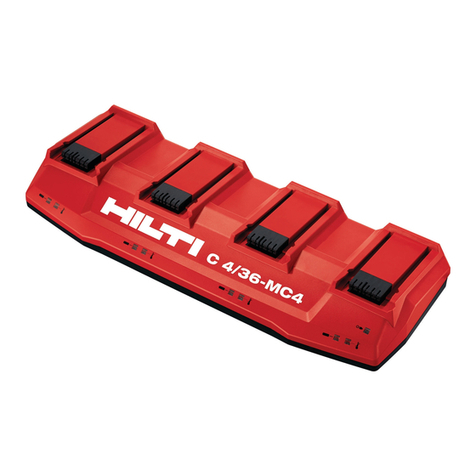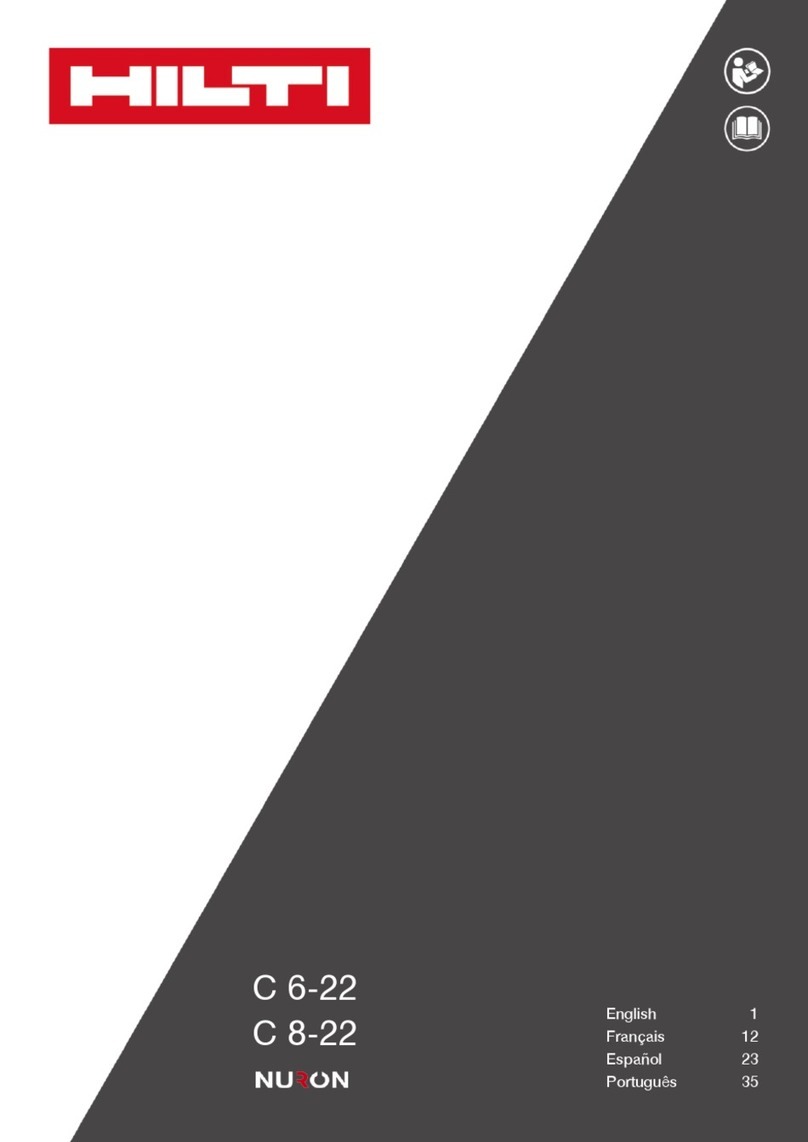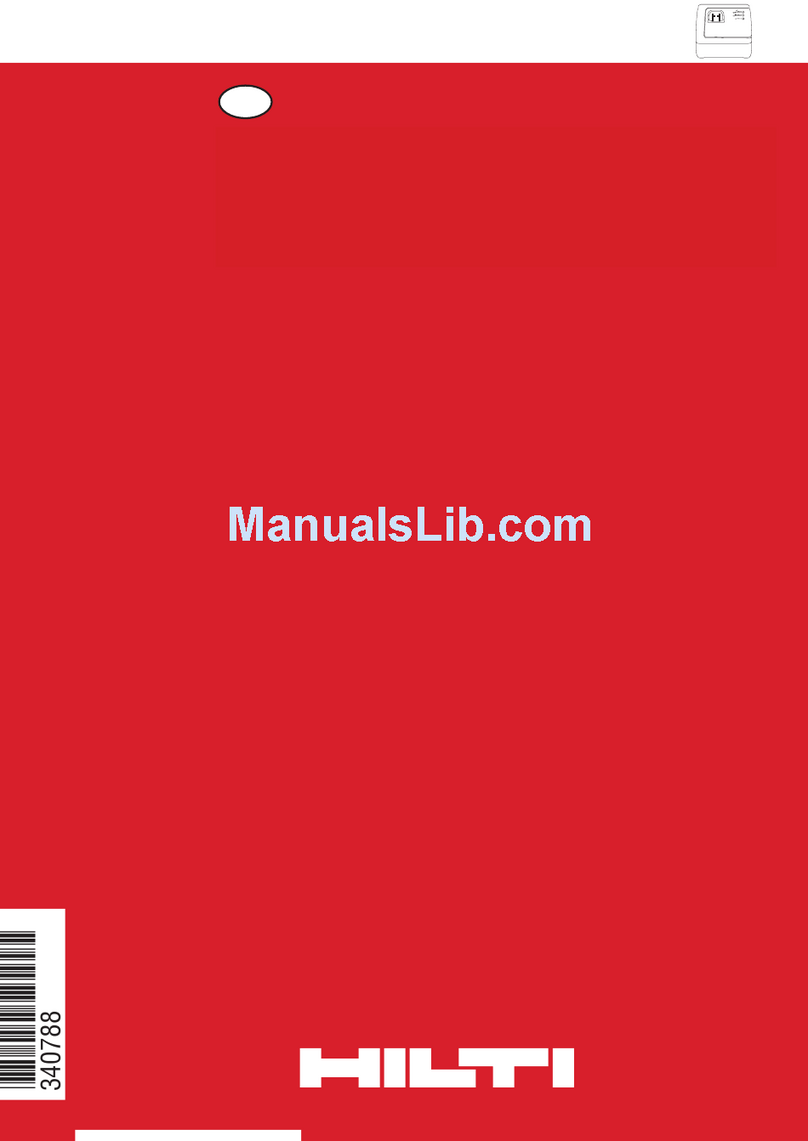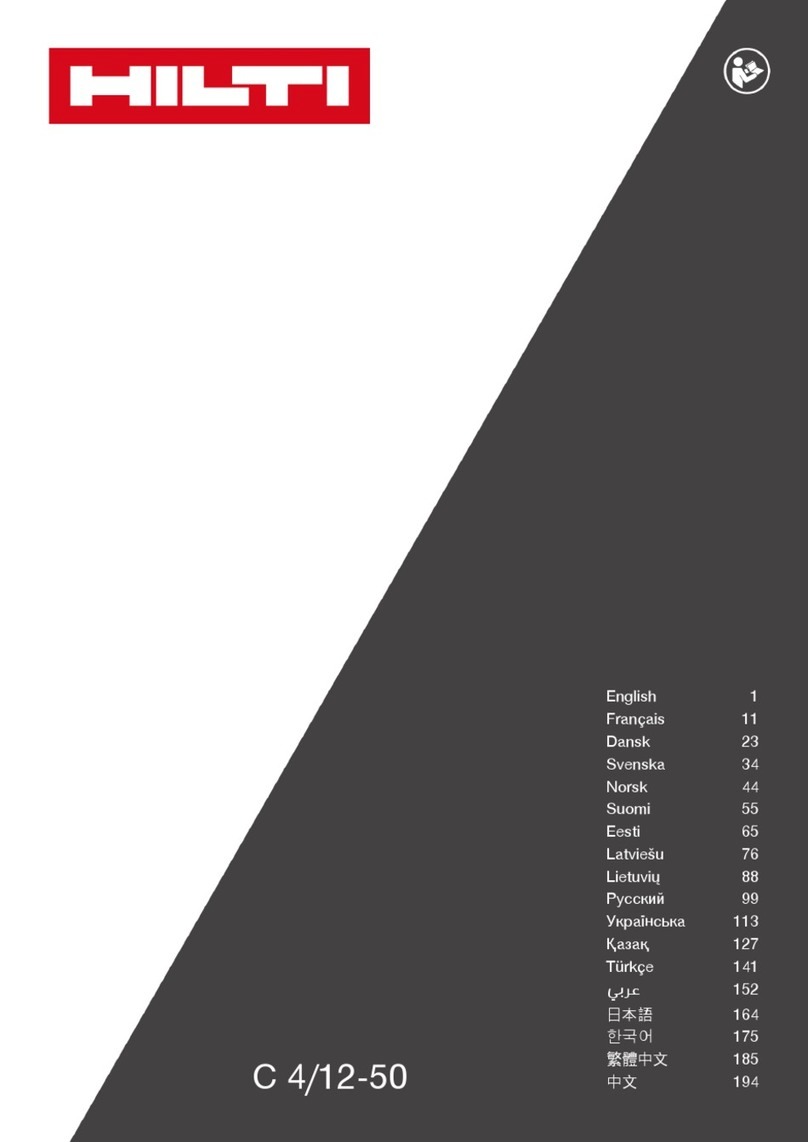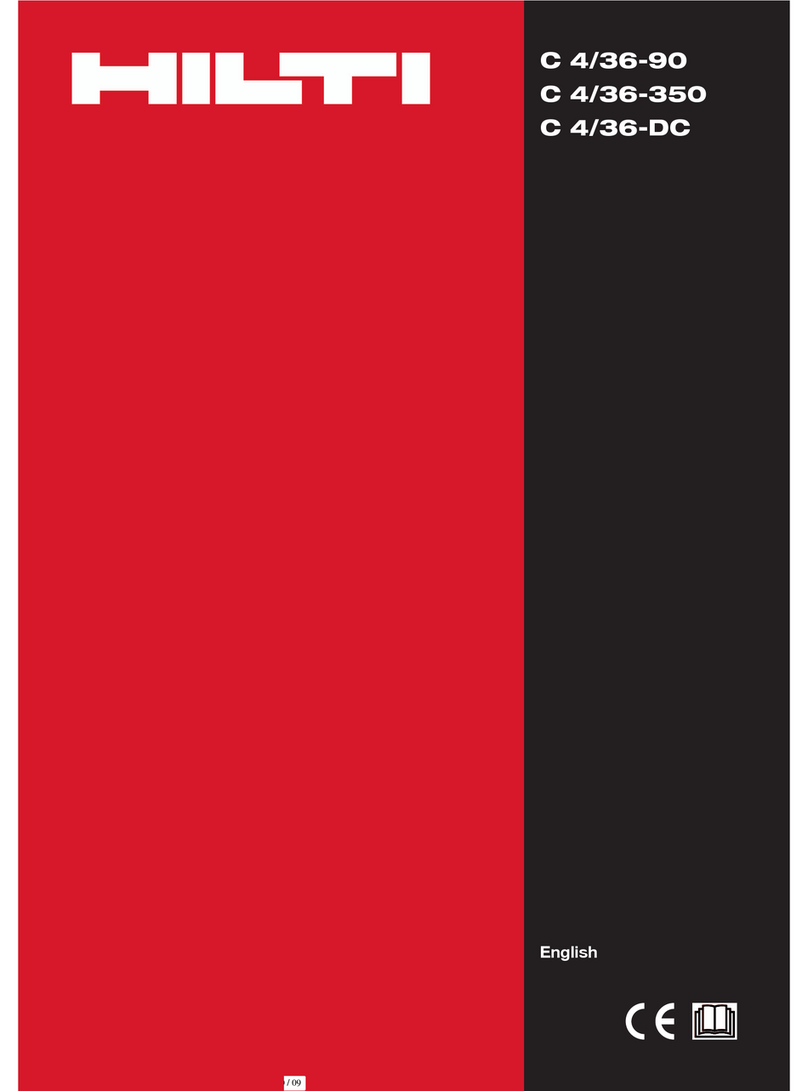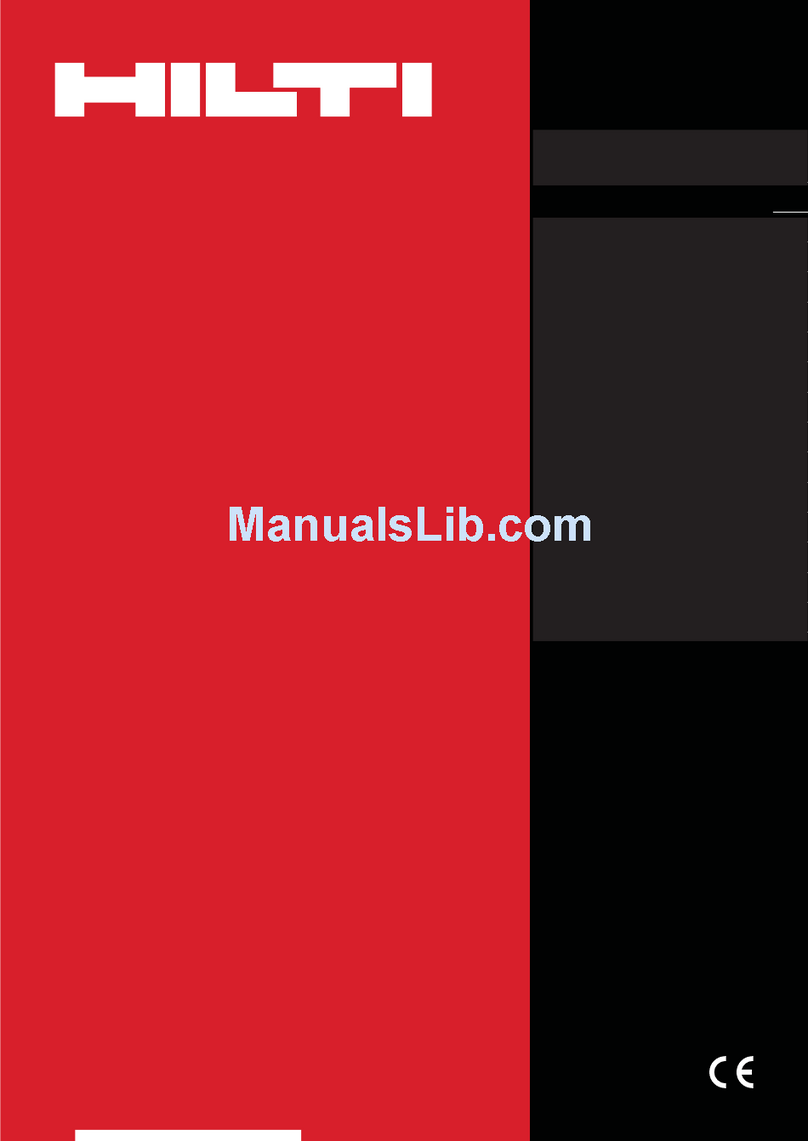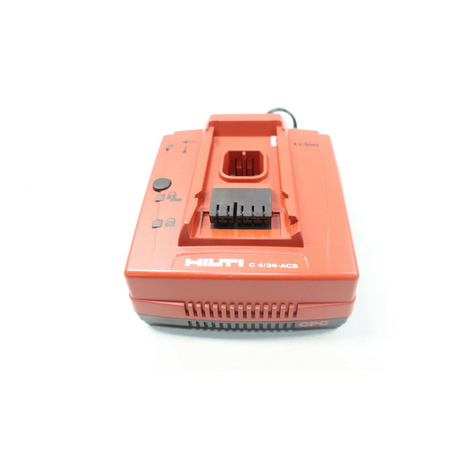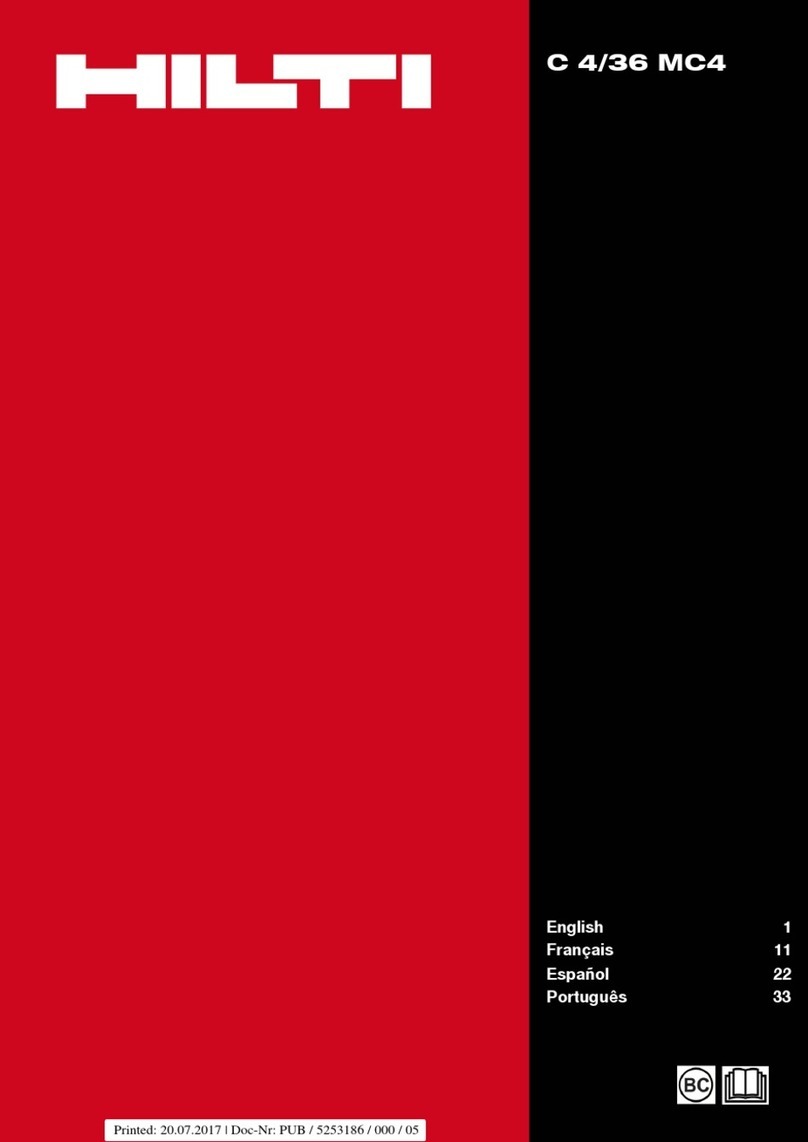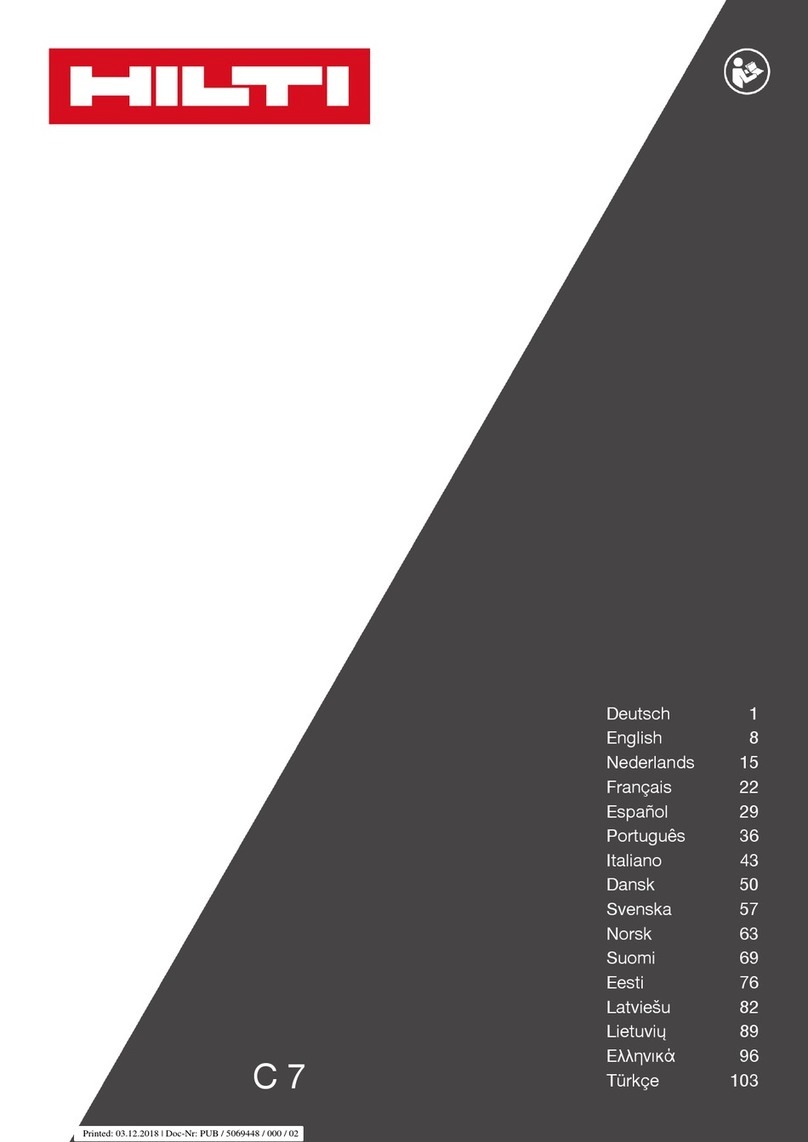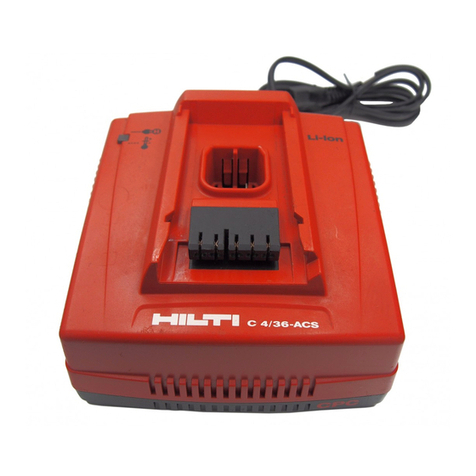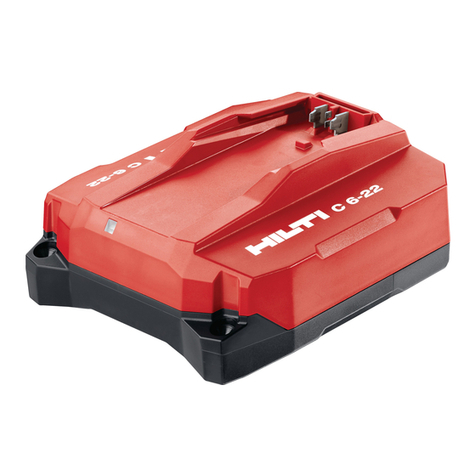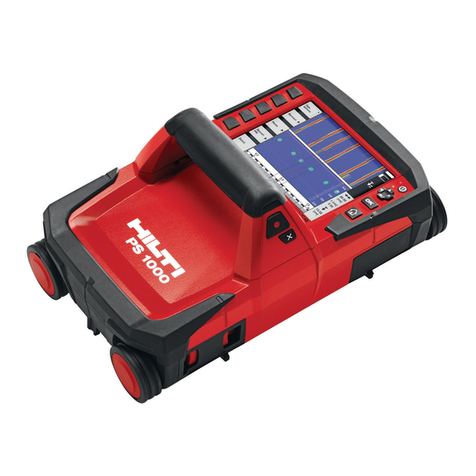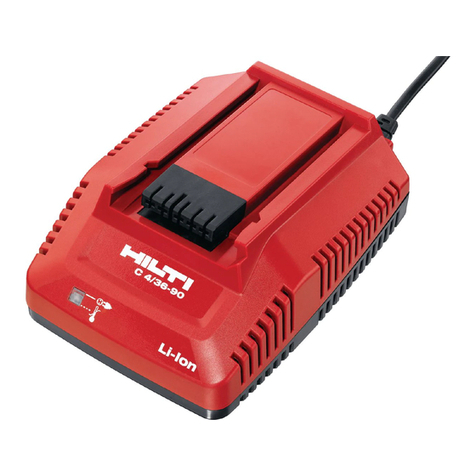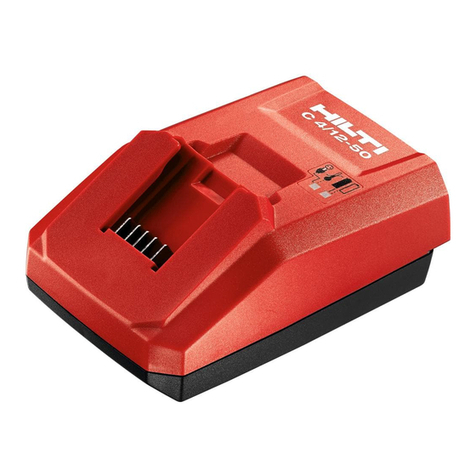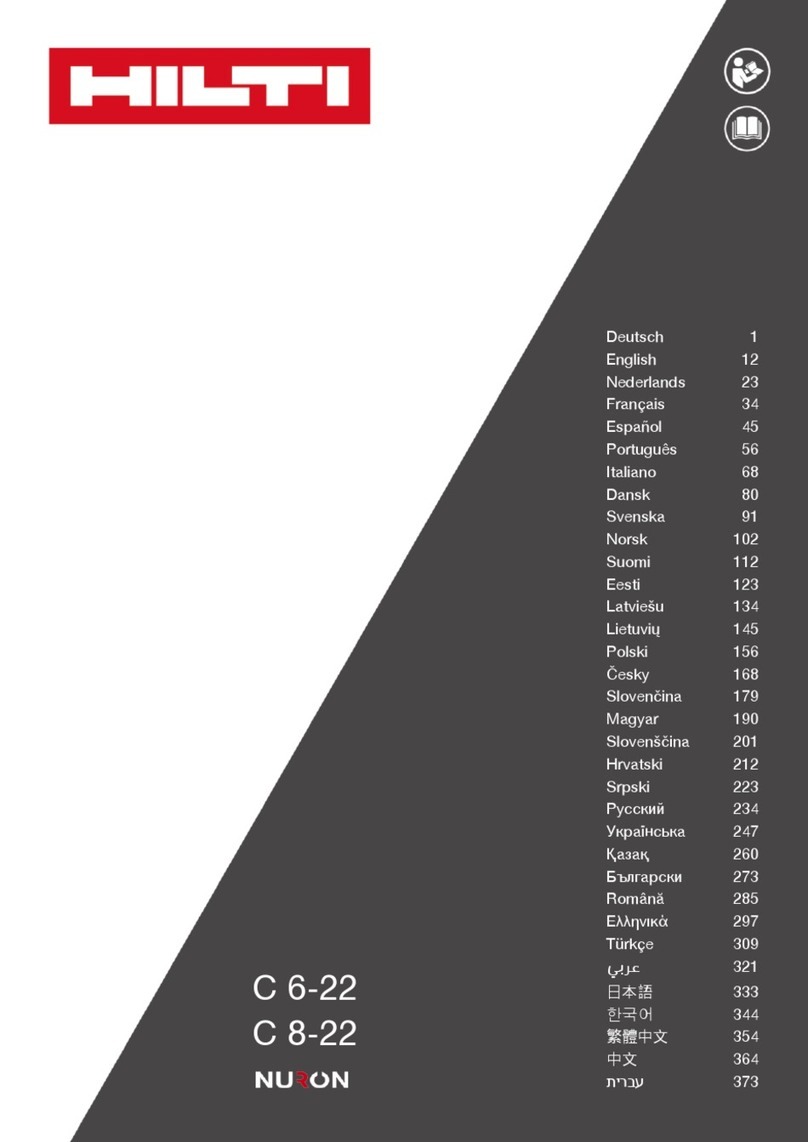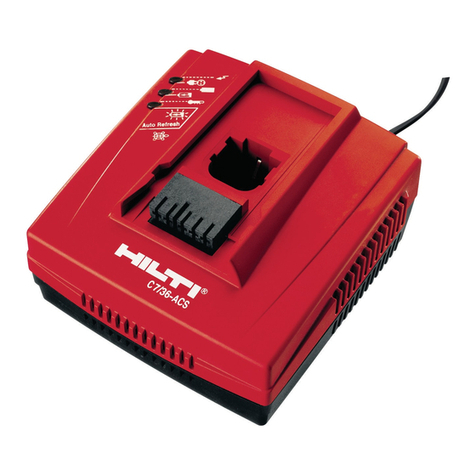
e) Use chargers and the corresponding bat-
teries in accordance with these instruc-
tions and as is specified for this particu-
lar model. Use of chargers for applications
different from those intended could result in
hazardous situations.
f) Charge the battery only in the chargers
recommended by the manufacturer. Use
of a charger with batteries other than the
specific type(s) for which it is designed
presents a risk of fire.
g) When not in use, keep the battery and
the charger away from paper clips, coins,
keys, nails, screws or other small metal
objects that could cause a short circuit
at the battery terminals or the charging
contacts. A short circuit at the battery ter-
minals or charging contacts could result in
personal injury (burns) or fire.
h) Under abusive conditions, liquid may
leak from the battery. Avoid contact
with the liquid. In the event of accidental
contact, flush with water. If the liquid
comes into contact with the eyes also
consult a doctor. Liquids leaking from the
battery may cause skin irritation or burns.
4.1.5 Service
Have your appliance repaired only by
qualified specialists using only genuine Hilti
spare parts.This will ensure that the appliance
remains safe to use.
4.2 Additional safety precautions
4.2.1 Personal safety
a) Take care to ensure that the charger is
standing in a steady, secure position. A
falling battery or charger may present a risk
of injury to yourself or others.
b) Avoid touching the contacts.
c) Batteries that have reached the end of
their life must be disposed of safely and
correctly to avoid environmental pollu-
tion.
d) This appliance is not intended for use
by persons (including children) with re-
duced physical, sensory or mental cap-
abilities, or lack of experience and know-
ledge, unless they have been given su-
pervision or instruction concerning use
of the appliance by a person responsible
for their safety.
e) Children must be instructed not to play
with the appliance.
4.2.2 Battery charger use and care
a) Take care to ensure that the batteries
suffer no mechanical damage.
b) Do not charge or continue to use dam-
aged batteries (e.g. batteries with cracks,
broken parts, bent or pushed-in and/or
pulled-out contacts).
4.2.3 Electrical safety
a) Do not touch the supply cord or
extension cord if they are damaged
while working. Disconnect the supply
cord plug from the power outlet.
Damaged supply cords or extension cords
present a risk of electric shock.
b) Never operate the appliance when it is
dirty or wet. Under unfavorable conditions,
dampness or dust adhering to the surface
of the appliance, especially dust from con-
ductive materials, may present a risk of
electric shock. Dirty or dusty appliances
should thus be checked at a Hilti service
center at regular intervals, especially if used
frequently for working on conductive ma-
terials.
4.2.4Workareasafety
Ensure that the workplace is well lit.
en
13
Printed: 10.12.2013 | Doc-Nr: PUB / 5069444 / 000 / 01
